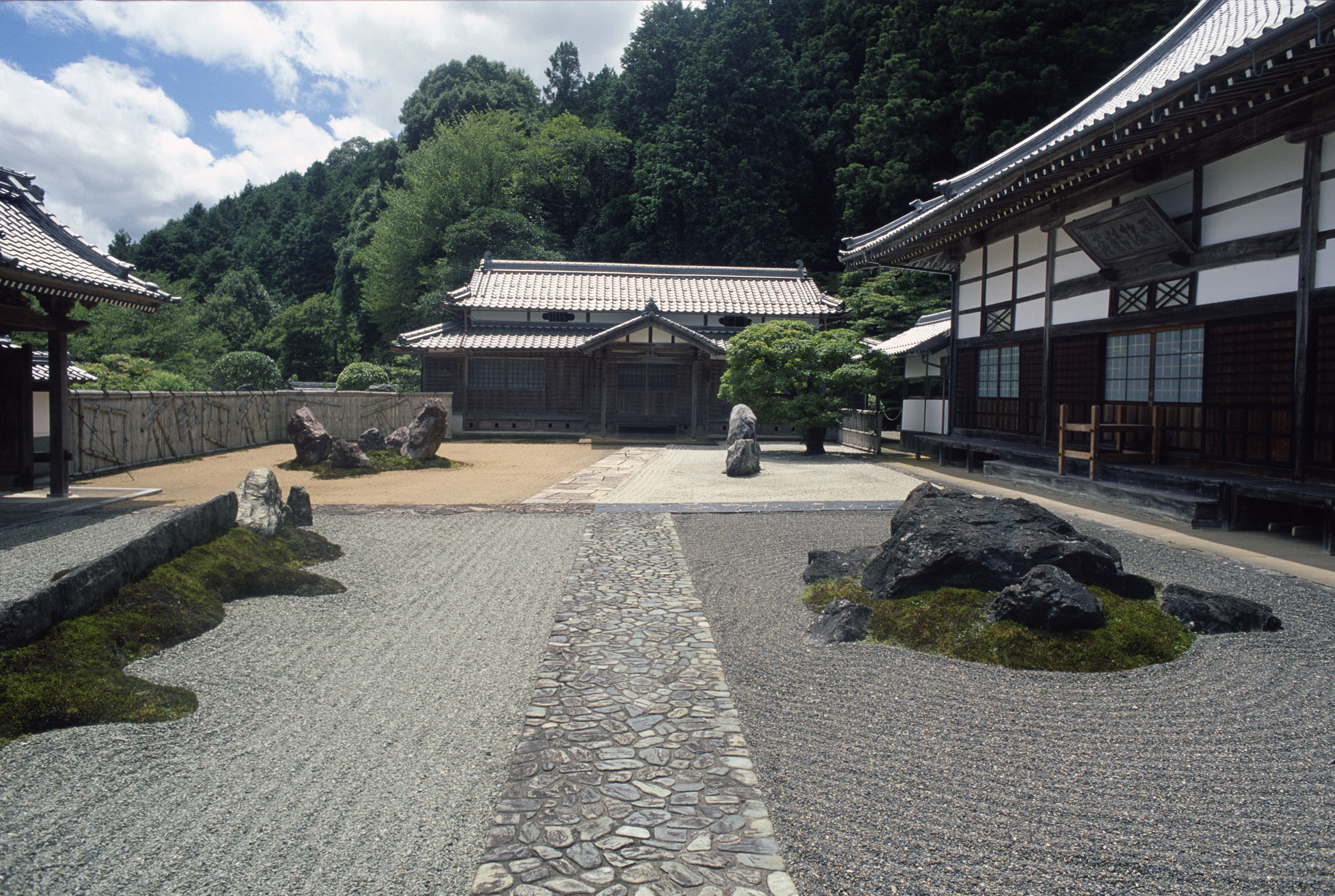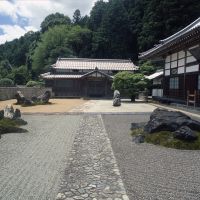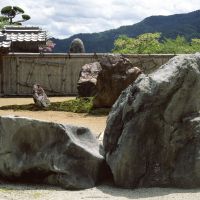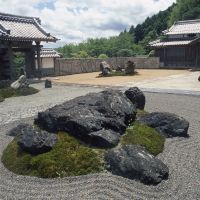Almost every garden of importance in Japan is located within or near a center of culture. The dry landscape garden at Sekizo-ji Temple is that rare exception: a highly original, influential design in a little-known rural district.
Sekizo-ji is to be found in a hamlet near the village of Tamba-Takeda, which is a 15-minute ride on a two-carriage train from Fukuchiyama, a city in northern Kyoto Prefecture on the Yura River.
The curious name of the village hints at former tithe privileges enjoyed by a family of locally landed gentry.
The absence of public transport or taxis at its tiny clapboard station suggests an area that receives few visitors.
After a fruitless search for maps and signposts, I approached a crusty-looking local for directions. He would be glad to take me there, he said, climbing into the cockpit of his truck and indicating the passenger seat.
Driving past signs pointing to ancient tombs in the area, I was seriously advised against going up into the woods above the temple, which is apparently the domain of large numbers of mamushi, those nasty pit vipers that populate much of the Japanese countryside during the warmer months.
Noticing my camera bag, he cautioned in a barely penetrable Hyogo accent, "There's an old iwakura (god-stone) up there in the trees that the temple takes its name from. But it's buried in undergrowth, so don't even think about going there for a picture."
The garden stands in magnificent solitude above the hamlet, in the courtyard of a hillside temple reached by climbing a flight of stone steps. The slope is reinforced with rammed stones, resembling the manner of building traditional rice terraces. A chilly bluff in winter, the temple is the abode of dragonflies, occasional lizards and possibly the odd transiting snake in the summer months.
Completed in 1972, the garden at Sekizo-ji Temple is the work of design iconoclast Shigemori Mirei, who famously said, "Gardens are art, an avant-garde art." The temple's site close to an iwakura, believed to be a gathering point of the gods, is significant. Inspired by the sacred rock, Shigemori's garden, in being both an innovative design and paying homage to the deities, challenges the limits of the contemporary stone garden.
Based on the Chinese concept of shijin soo — the gods that guard the four heavenly ordinances — each divinity is represented at Sekizo-ji by a separate cluster of rocks. Signaling the advent of gardens of a rare geometrical abstraction in Japan, it employs four tones of gravel, eschewing the convention of imitating the colors and hues of natural landscapes.
Linked to the color black, the tortoise, guardian of water, symbolizes the north. To emphasis the symbolism, Shigemori placed stones in the form of a tortoise on a rectangle of black pebbles. The east portion of the garden is represented by the dragon, guardian of the Earth, which is associated with the color blue; hence elongated stones have been positioned over a bed of dark-blue gravel. A larger expanse of rust-colored sand occupies the garden's south, provenance of the phoenix, guardian and protector of fire. On it, Shigemori has positioned rocks in the form of a firebird spreading its wings. Resembling the outline of a tiger, the wind guardian, a tight cluster of pale, whiteish rocks represents the west.
In Shigemori's conceit, the gods would descend to the north point of the garden from the iwakura on the hill above the temple, then move in a counterclockwise direction from one stone grouping to the next, until the four gods were linked in a circular dance.
There are other distinctive touches that set this garden apart. Shigemori placed bamboo fencing within the grounds, in what at first appears to be a superfluity or design excess. Judging from the brittle, silvered surfaces of the bamboo rods, organized across the fence behind the red phoenix stone arrangement, they look as if they might actually be the originals set in place almost 40 years ago.
But as with everything Shigemori conceived, there is method and symbolism in these features. It is still possible to make out a bamboo arrangement forming the kanji shishin, meaning "four gods" — the main theme of the garden. Another Chinese character, fading but visible, stands close to the bell tower and reads seki (stone).
Sheltered walls and a well-endowed temple purse have helped to keep the garden in good shape, pervaded as it is by a silence peculiar to stone structures deep in rural areas.
After an hour in the garden I had yet to see or hear a single human stirring. Where were the head priest and his wife, I wondered? And what about visitors? The absence of people on a clement weekend day was puzzling, but made sense given the relative remoteness of the location. Solitude is something to be savored in gardens that, designed as places of contemplation and repose, are often marred by the din of over-patronage.
You might say that Sekizo-ji is one of those gardens that deserves more visitors — but actually, it is better off for not having them.
Getting there: Take the JR Fukuchiyama Line from Fukuchiyama to Tamba-Takeda Station. Then it's a 1.5-km walk northeast to Sekizo-ji Temple. The garden is always open, and there is no entrance fee. Stephen Mansfield is the author of "Japanese Stone Gardens: Origins, Meaning, Form."





















With your current subscription plan you can comment on stories. However, before writing your first comment, please create a display name in the Profile section of your subscriber account page.